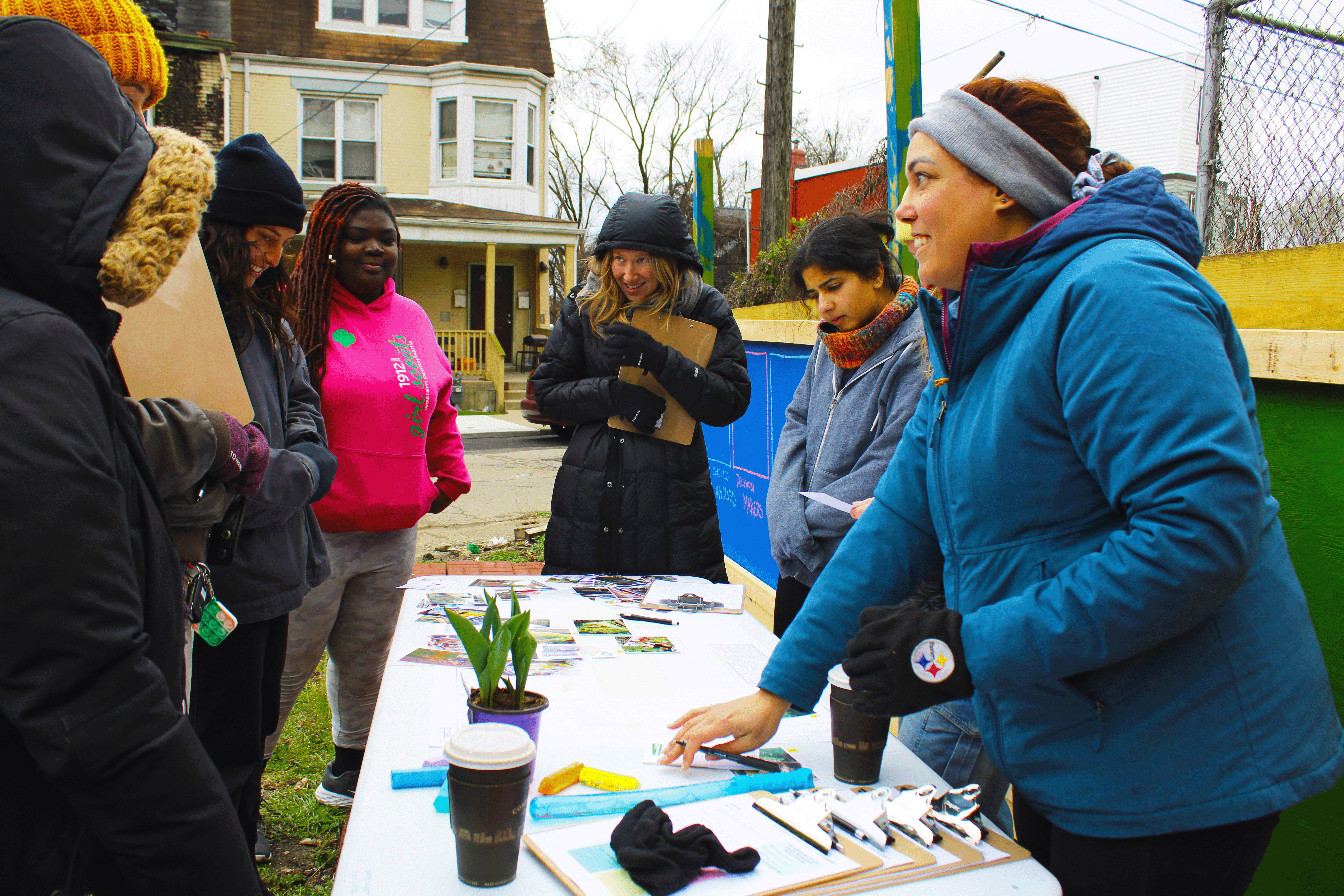By: Aaron Aupperlee/Trib Live November 7, 2015
Grass weeds grew high this summer on the lots across the street from Renee Robinson’s home in East  Liberty.
Liberty.
Graffiti covered a retaining wall.
“It’s just vacant,” Robinson said, adding that the two houses on the lots at Chislett and Black streets had long since been torn down.
So Robinson, 31, who moved into her house on Chislett about three years ago, organized volunteers to clean up the lots. They turned the graffiti wall into a mural full of colorful artwork and children’s characters such as Garfield. They turned a hole in the middle of the lot into a fire pit and lined it with bricks and other debris found on the site. They haven’t held a neighborhood campfire yet — Robinson isn’t sure on the rules — but she wants to.
Robinson wants to do much more with the vacant lots. She pictures an open space and a small park where kids can play and the neighborhood can meet.
Chris Koch, the CEO of Design Center, a Downtown nonprofit that promotes design and planning to rebuild neighborhoods and communities, listened to Robinson’s problems and plans during the inaugural “Blight Boot Camp” hosted by the city of Pittsburgh on Saturday at the Wyndham Pittsburgh University Center Hotel in Oakland.
Koch took notes. She gave advice.
Robinson, like many people in Pittsburgh and Allegheny County, has a problem with blight in her neighborhood. Koch was her blight doctor.
“There are programs out there and resources to do this kind of stuff, and we want you to know what they are,” she told Robinson, offering to connect her with an architect who could help design a plan for the lots for free.
More than 150 people registered for the boot camp, which offered speakers, panel discussions, one-on-
one blight consultations and breakout sessions on fighting blight. Suggestions ranged from using community art to planning vacant lot projects and utilizing government resources.
“We’re really looking for people to tell us their problems. Call 311,” Maura Kennedy, who heads Pittsburgh’s Department of Permits Licenses and Inspections, said during a morning panel discussion. “We can’t help you with things we don’t know about.”
Pittsburgh has more than 26,000 tax-delinquent properties. Nearly 20 percent of all lots in the city are considered physically or economically distressed. Allegheny County has about 62,000 vacant lots.
“You’re going to hear a lot about how to alleviate blight, how to fight blight,” said Presley Gillespie, president of Neighborhood Allies, a Pittsburgh community development group. “Take what you learn and do it.”
For Robinson, that means meeting with the architect Koch recommends, developing a plan and taking those designs to Pittsburgh’s Urban Redevelopment Authority, which owns the vacant lots. Robinson may have to start small and ask for a garden waiver from the URA, which would allow her to start a small patch to grow fruits and vegetables.
“You don’t have to go from zero to 100,” Koch told Robinson.
Aaron Aupperlee is a staff writer for Trib Total Media. He can be reached at 412-320-7986 or aaupperlee@tribweb.com.

